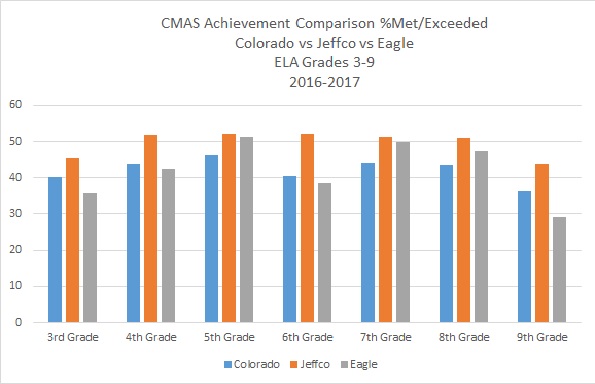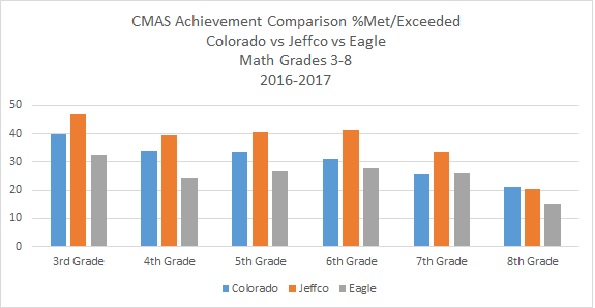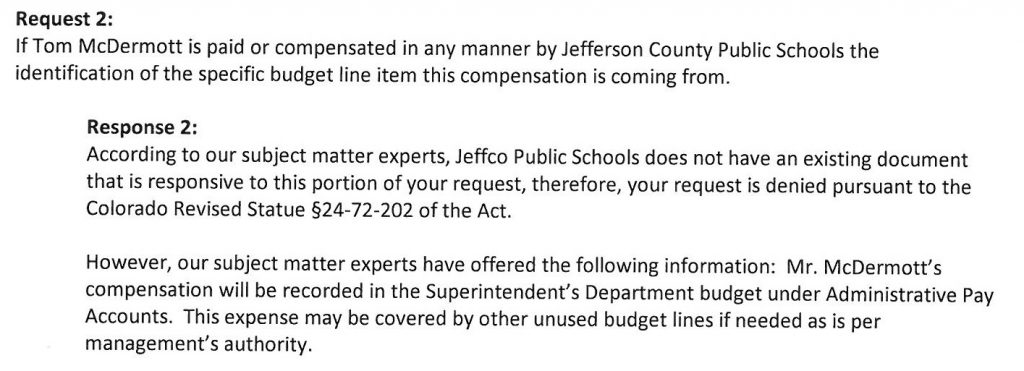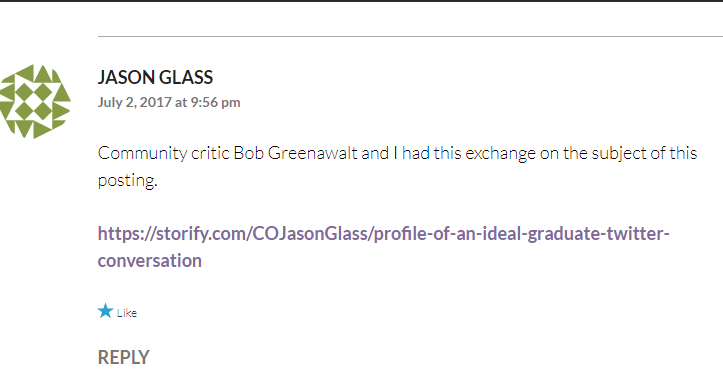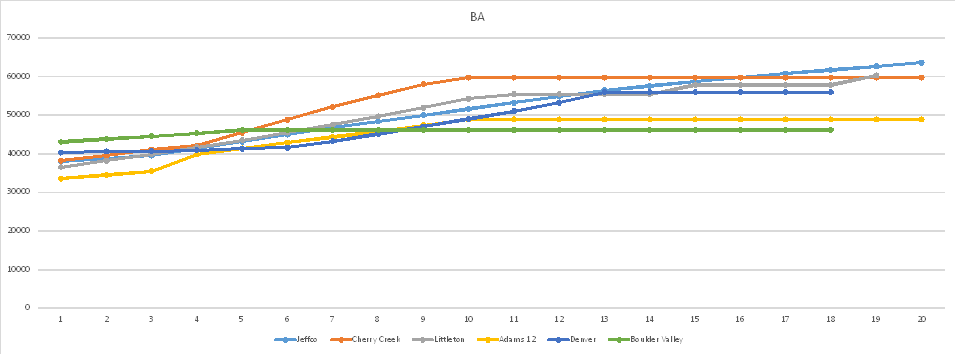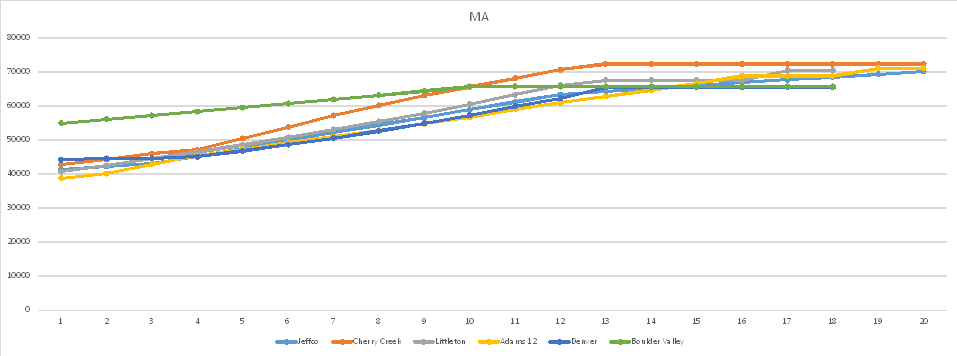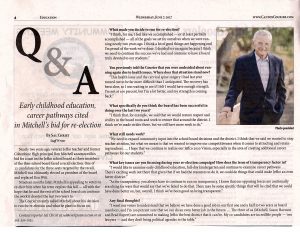I’ve recently read several comments to Dr. Glass in response to his 3 Questions for Jeffco along with a blog posting on Support Jeffco Kids (SJK) that talk about teacher turnover and cite Colorado Department of Education (CDE) statistics to justify calls for increasing teacher compensation. Specifically, the Support Jeffco Kids post states:
“Teachers and principals are leaving Jeffco for other districts that offer better paying jobs. Teacher turnover in Jeffco increased from 10 percent to 15 percent between 2013-14 and 2014-15, according to Chalkbeat Colorado. Though it has slowed since the recall of WNW, our turnover rate is more than half of the other large Front Range/metro area districts.”
The fact is that the CDE statistics can NOT be used to support the premise that ‘Teachers and principals are leaving Jeffco for other districts that offer better paying jobs.” The ONLY thing the CDE statistics can be used to say is that some percentage of teachers have left Jeffco. Neither CDE nor Jeffco know WHY the teachers have left. I previously filed a CORA request with the Jeffco school district to determine if exit interviews were conducted of teachers leaving the school district and the response to that request was that surveys are not routinely conducted.

Therefore, without knowing the answer to this vital question, no one, including Support Jeffco Kids and any of a number of other people can make the claim that:
“Teachers and principals are leaving Jeffco for other districts that offer better paying jobs.”
The primary reason for this is that CDE’s teacher turnover rate includes teachers leaving for a wide variety of reasons such as:
- Retirement
- Moving with family due to a significant other’s job relocation
- Moving out of the area to be closer to family
- Birth of a child
- Taking a position with another school district to be geographically closer to the teacher’s own residence
- Taking another, non-teaching, position within the same school district
- Leaving teaching completely either because teaching is not a perfect fit, going back to school or other opportunities
- Leaving the school district due to discipline or performance issues (actually good for the district)
- Leaving Jeffco for a higher paying school district (should we even count marginal or low performing teachers in this category? I think not.)
While leaving Jeffco for a higher paying school district is one component of the CDE’s Teacher Turnover rates, using it to support any premise related to teachers and principals leaving Jeffco for better paying jobs is completely unfounded.
In addition, even the Chalkbeat article quoted by Support Jeffco Kids does not support the SJK conclusion:
“Teacher attrition is often caused by conditions outside of districts’ control, said Robert Reichardt, a consultant with Augenblick, Palaich and Associates who has studied teacher workforce issues in Colorado. He said those factors include the average age of teachers (the youngest and oldest teachers are more likely to leave their jobs) and the state of the economy (harder economic times, such as the years following the Great Recession of 2008, mean less turnover because jobs are harder to find).”
I think it would be an interesting conversation to have if we knew the actual turnover rate of quality Jeffco teachers leaving for a higher paying teaching job elsewhere, but until either Jeffco or CDE collects that information, using the CDE statistics to support that conclusion is just an inaccurate Alternative Fact.
The second Alternative Fact in the Support Jeffco Kids posting is the statement regarding comparison of Turnover Rates:
“Though it has slowed since the recall of WNW, our turnover rate is more than half of the other large Front Range/metro area districts.”
While this statement is unclear, I will assume that it is intended to mean that the turnover rate is one and a half times the rate of other large Front Range/metro area districts.
Again, we don’t know which districts SJK is using for comparison, but in looking at the rates of the 4 large districts used for compensation comparison purposes in Jeffco, this statement is once again unsupported:

Yes, the Turnover Rate in Jeffco is higher than Boulder Valley and Cherry Creek, but not the two other large Districts. Certainly not more than one and a half times the rate of the “other large Front Range/metro area districts” that Support Jeffco Kids wants you to believe. Once again, more Alternative Facts based on conjecture and not actual data.
If the data supported what Support Jeffco Kids and other people want you to believe that would be one thing, but their Alternative Facts are just not true.
Finally, using SJK’s logic, if WNW were completely responsible for the increased Turnover Rate in Jeffco wouldn’t the election of the ‘clean slate’ Board have immediately returned the rate to what it was in 2013-2014 – 10%? It didn’t return to that, sitting at 14.4% in 2016-2017. Therefore, either Turnover Rates are more complicated than SJK wants you to believe or teachers are not happy even with the ‘clean slate’. My take is that SJK gives too much credit to WNW for a complex statistic.
The bottom line is that Teacher Turnover rates should not be used to imply anything without additional, more detailed, information that explains the composition of the rates. Any conclusions drawn from the CDE data are pure conjecture and completely biased – Alternative Facts.
